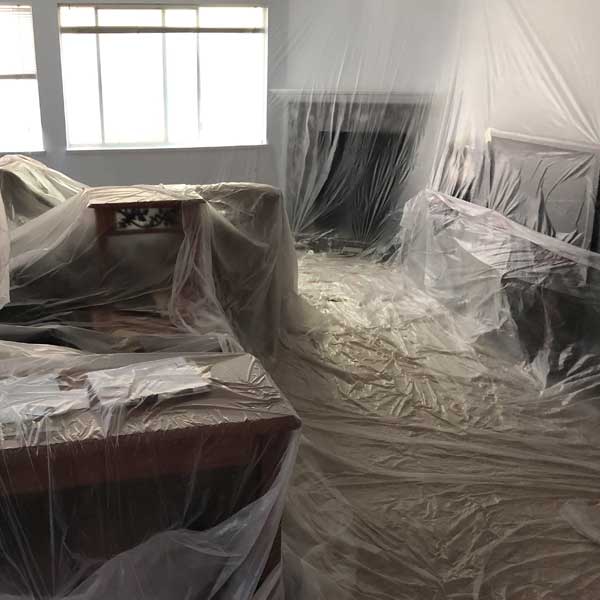Need Repair in The Great Vancouver Abbotsford Areas – Contact Us >
Salvaging, Diagnosing, and Perfecting Drywall
In the world of construction and home improvement, drywall plays a pivotal role as the canvas upon which dreams are painted. It’s the silent protector of our interiors, offering structure, insulation, and a smooth, clean finish. However, when water damage, wear and tear, or the passage of time begin to take their toll, it’s crucial to have the skills and knowledge to salvage, diagnose, and perfect drywall. In this article, I, a seasoned industry tradesman, will share my insights on these key topics: salvaging wet drywall, how to know if drywall needs replacing after water damage, covering drywall imperfections, the consequences of not repairing drywall, dealing with years of defective drywall, addressing the causes of drywall bulging, and repairing drywall without sanding.
1. Salvaging Wet Drywall
Water damage can be a drywall’s worst enemy. When exposed to moisture, drywall can become weakened, discolored, and even develop mold. Salvaging wet drywall requires swift action. First, identify the source of the moisture and address it to prevent further damage. Then, remove any wet insulation and cut away the damaged portion of the drywall, ensuring you reach unaffected areas.
Afterwards, it’s essential to thoroughly dry the area using fans and dehumidifiers, as moisture trapped within the drywall can lead to future issues. Once everything is dry, you can patch the affected area, ensuring it’s seamless with the rest of the wall.
2. How to Know if Drywall Needs Replacing After Water Damage
Not all water-damaged drywall requires replacement, but knowing when to replace it is critical. Signs to look for include:
- Sagging or Warping: If the drywall has significantly warped or sagged due to water absorption, it’s typically beyond repair.
- Visible Mold Growth: If you see mold on the drywall, it’s a clear indication of moisture infiltration. Moldy drywall should be replaced to prevent health hazards.
- Severe Discoloration: Extensive discoloration or staining may indicate water damage that has compromised the integrity of the drywall.
- Soft Spots: Press the drywall gently; if it feels soft or spongy, it’s likely water-damaged and should be replaced.
In such cases, replacing the damaged sections is the safest course of action to ensure the structural integrity of your wall.
3. Covering Drywall Imperfections
Drywall imperfections, such as dents, cracks, or small holes, can be unsightly and reduce the overall aesthetics of a room. To cover these imperfections, follow these steps:
- Fill the Imperfection: Use a joint compound to fill in holes or cracks. Allow it to dry, and then sand it smooth.
- Apply Primer: Apply a primer to the repaired area to create an even surface.
- Paint: Paint the entire wall to ensure a uniform appearance. This will help blend the repaired area with the rest of the wall.
4. Consequences of Not Repairing Drywall
Neglecting drywall repairs can lead to several negative consequences. These include:
- Structural Damage: Water-damaged or deteriorating drywall can compromise the structural integrity of your walls.
- Mold Growth: Moisture-damaged drywall can become a breeding ground for mold, which can pose health risks.
- Reduced Property Value: Unattractive and damaged drywall can reduce the value of your property.
- Aesthetic Issues: Imperfections in the drywall can mar the appearance of your home, making it less inviting.
5. Years of Defective Drywall
In some unfortunate cases, homeowners may discover that their drywall was defective from the start. This can manifest as bulging, cracking, or other structural issues. If you suspect you have defective drywall, it’s crucial to consult with a professional and consider a full replacement. This may be necessary to ensure your home remains safe and aesthetically pleasing.
6. Causes of Drywall Bulging
Drywall bulging is a common issue that can result from various causes, including:
- Moisture: Water infiltration can cause drywall to swell and bulge.
- Improper Installation: Poor installation techniques can lead to bulging as the drywall settles.
- Structural Issues: Problems with the underlying structure can transfer stress to the drywall, causing it to bulge.
- Age: Over time, drywall can naturally develop imperfections, including bulging.
Identifying the cause is essential for effective repairs.
7. Repairing Drywall Without Sanding
Repairing drywall without sanding can be a time-saving and dust-reducing approach. To achieve this, you can follow these steps:
- Use a Joint Compound: Apply a thin layer of joint compound over the damaged area, feathering the edges to create a smooth transition.
- Use a Drywall Sponge: While the joint compound is still wet, use a damp drywall sponge to gently smooth out the surface, eliminating the need for sanding.
- Prime and Paint: After the compound dries, prime and paint the repaired area to match the rest of the wall.
Mastering the art of drywall care is a valuable skill for industry professionals and homeowners alike. Whether salvaging wet drywall, diagnosing water damage, or perfecting the finishing touches, understanding these key aspects of drywall maintenance can ensure your walls remain structurally sound and visually appealing for years to come.






